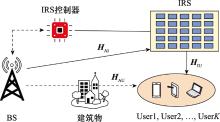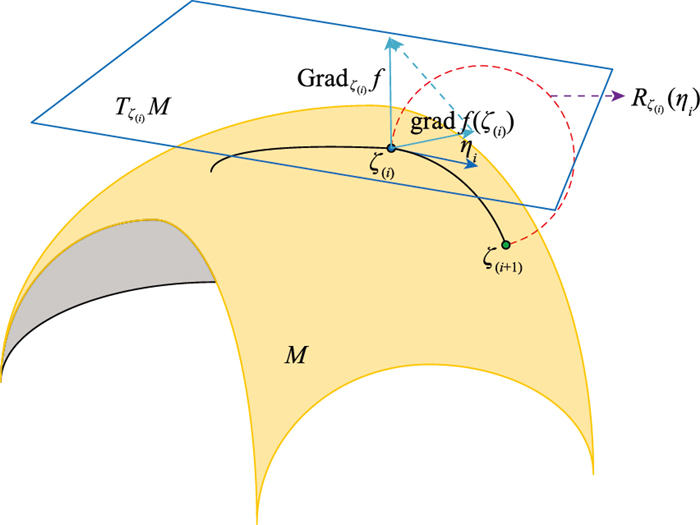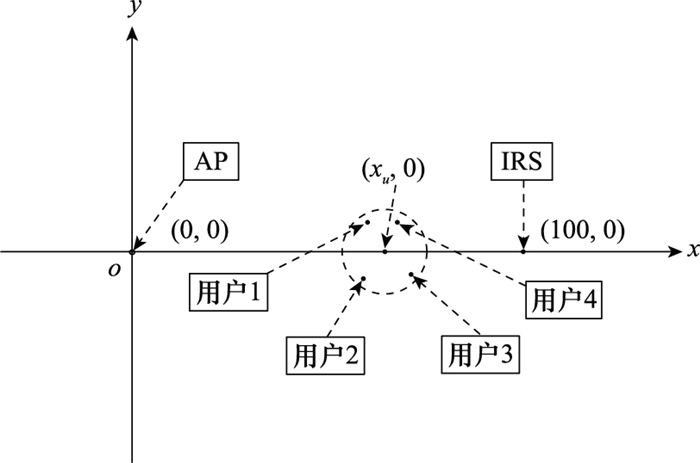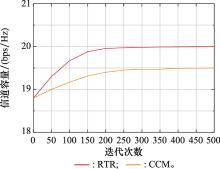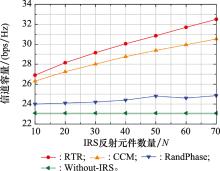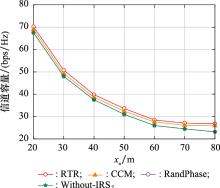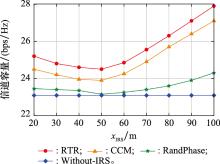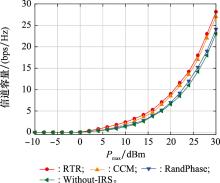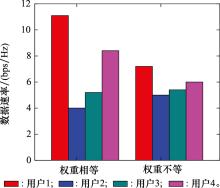| 1 |
SAAS W , BENNIS M , CHEN M Z . A vision of 6G wireless systems: applications, trends, technologies, and open research problems[J]. IEEE Network, 2019, 34 (3): 134- 142.
|
| 2 |
CHU Z , XIAO P , MI D . Intelligent reflecting surfaces enabled cognitive internet of things based on practical pathloss model[J]. China Communications, 2020, 17 (12): 1- 16.
doi: 10.23919/JCC.2020.12.001
|
| 3 |
WU Q Q , ZHANG R . Beamforming optimization for wireless network aided by intelligent reflecting surface with discrete phase shifts[J]. IEEE Trans.on Communications, 2020, 68 (3): 1838- 1851.
doi: 10.1109/TCOMM.2019.2958916
|
| 4 |
NING B Y , CHEN W J , CHEN Z , et al. Beamforming optimization for intelligent reflecting surface assisted MIMO: a sum-path-gain maximization approach[J]. IEEE Wireless Communication Letters, 2020, 9 (7): 1105- 1109.
|
| 5 |
BADIU M , COON J . Communication through a large reflecting surface with phase errors[J]. IEEE Wireless Communications Letters, 2020, 9 (2): 184- 188.
doi: 10.1109/LWC.2019.2947445
|
| 6 |
ABEYWICKRAMA S, ZHANG R, YUEN C. Intelligent reflecting surface: practical phase shift model and beamforming optimization[C]//Proc. of the IEEE International Conference on Communications, 2020.
|
| 7 |
WU Q Q, ZHANG R. Intelligent reflecting surface enhanced wireless network: joint active and passive beamforming design[C]//Proc. of the IEEE Global Communications Conference, 2018.
|
| 8 |
WU Q Q , ZHANG R . Intelligent reflecting surface enhanced wireless network via joint active and passive beamforming[J]. IEEE Trans.on Wireless Communications, 2019, 18 (11): 5394- 5409.
doi: 10.1109/TWC.2019.2936025
|
| 9 |
YU H , SHI J , WAN K T , et al. Large intelligent surface-assisted wireless communication exploiting statistical CSI[J]. IEEE Trans.on Vehicular Technology, 2019, 68 (8): 8238- 8242.
doi: 10.1109/TVT.2019.2923997
|
| 10 |
HUANG C W , ZAPPONE A , GEORGE C , et al. Reconfigurable intelligent surfaces for energy efficiency in wireless communication[J]. IEEE Trans.on Wireless Communications, 2019, 18 (99): 4157- 4170.
|
| 11 |
XU D F, YU X H, SUN Y, et al. Resource allocation for secure IRS-assisted multiuser MISO systems[C]//Proc. of the IEEE GlobecomWorkshops, 2019.
|
| 12 |
PAN C H , REN H , WANG K Z , et al. Multicell MIMO communications relying on intelligent reflecting surfaces[J]. IEEE Trans.on Wireless Communications, 2020, 19 (8): 5218- 5233.
doi: 10.1109/TWC.2020.2990766
|
| 13 |
GRANT M, BOYD S. CVX: Matlab software for disciplined convex programming[EB/OL]. [2021-03-08]. http://cvxr.com/cvx.
|
| 14 |
JOST J . Riemannian geometry and geometric analysis[M]. Berlin: Springer, 2008: 25- 129.
|
| 15 |
YOU L , XIONG J Y , NG D , et al. Energy efficiency and spectral efficiency tradeoff in RIS-aided multiuser MIMO uplink transmission[J]. IEEE Trans.on Signal Processing, 2020, 4 (11): 366- 380.
|
| 16 |
PAN C H , ZHU H L , GOMES N J , et al. Joint precoding and RRH selection for user-centric green MIMO C-RAN[J]. IEEE Trans.on Wireless Communications, 2017, 16 (5): 2891- 2906.
doi: 10.1109/TWC.2017.2671358
|
| 17 |
SHI Q J , RAZAVIYAYN M , LUO Z Q , et al. An iteratively weighted-MMSE approach to distributed sum-utility maximization for a MIMO interfering broadcast channel[J]. IEEE Trans.on Signal Processing, 2011, 59 (9): 4331- 4340.
doi: 10.1109/TSP.2011.2147784
|
| 18 |
ZHANG X D . Matrix analysis and applications[M]. Cambridge: Cambridge University Press, 2017.
|
| 19 |
YU X H, XU D F, SCHOBER R. MISO wireless communication systems via intelligent reflecting surfaces[C]//Proc. of the IEEE/CIC International Conference on Communications in China, 2019: 735-740.
|
| 20 |
ABSILP A , MALICK J . Projection-like retractions on matrix manifolds[J]. SIAM Journal on Optimization, 2012, 22 (1): 135- 158.
doi: 10.1137/100802529
|
| 21 |
YU X H , SHEN J , ZHANG J , et al. Alternating minimization algorithms for hybrid precoding in millimeter wave MIMO systems[J]. IEEE Journal of Selected Topics in Signal Processing, 2016, 10 (3): 485- 500.
doi: 10.1109/JSTSP.2016.2523903
|
